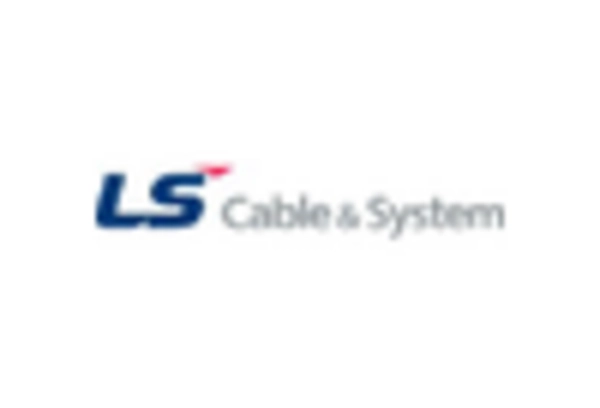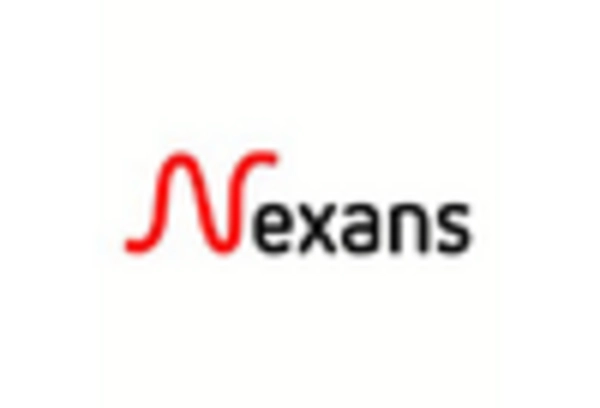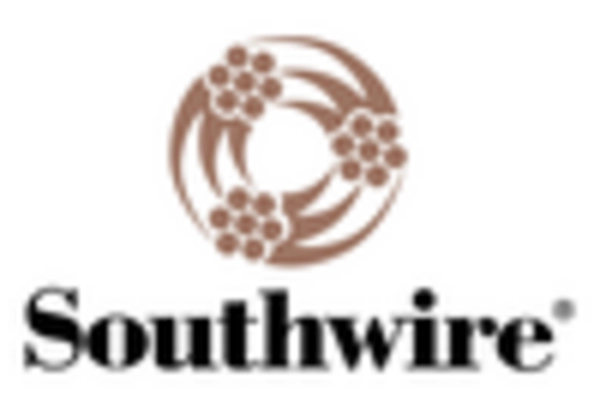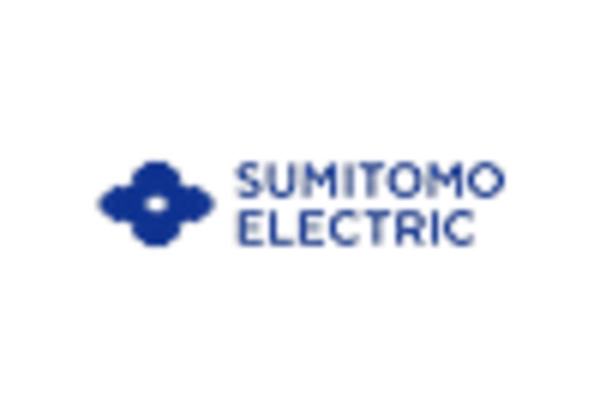Rising Demand for Renewable Energy
The increasing focus on renewable energy sources in the US is driving the medium voltage-cables market. As states implement policies to transition to cleaner energy, the demand for medium voltage cables is expected to rise significantly. For instance, the US aims to achieve a 50% reduction in greenhouse gas emissions by 2030, which necessitates substantial investments in renewable energy infrastructure. This shift is likely to require extensive medium voltage cabling to connect renewable energy sources, such as wind and solar farms, to the grid. The medium voltage-cables market is poised to benefit from this trend, as utilities and energy companies seek reliable and efficient cabling solutions to support their renewable energy projects.
Urbanization and Population Growth
Urbanization in the US is contributing to the expansion of the medium voltage-cables market. As more people migrate to urban areas, the demand for electricity increases, necessitating upgrades to existing electrical infrastructure. The US Census Bureau projects that urban areas will continue to grow, with an estimated 82% of the population living in cities by 2050. This urban expansion requires the installation of medium voltage cables to ensure reliable power distribution. The medium voltage-cables market must adapt to this growing demand by providing innovative solutions that meet the needs of urban planners and utility companies, ensuring that the electrical grid can support the increasing population.
Investment in Smart Grid Technologies
The push towards smart grid technologies in the US is influencing the medium voltage-cables market. Smart grids enhance the efficiency and reliability of electricity distribution, requiring advanced cabling solutions. The US Department of Energy has allocated over $4.5 billion to modernize the electrical grid, which includes the integration of medium voltage cables. These cables are essential for connecting various components of smart grids, such as sensors and automated systems. The medium voltage-cables market is likely to see growth as utilities invest in these technologies to improve grid resilience and accommodate the increasing complexity of energy distribution.
Regulatory Support for Infrastructure Upgrades
Regulatory frameworks in the US are increasingly supporting infrastructure upgrades, which is beneficial for the medium voltage-cables market. Federal and state governments are implementing policies that encourage the modernization of electrical systems to enhance reliability and safety. For example, the Infrastructure Investment and Jobs Act allocates substantial funding for upgrading power infrastructure, which includes medium voltage cabling. This regulatory support is likely to stimulate demand within the medium voltage-cables market, as utilities and contractors seek to comply with new standards and improve their infrastructure.
Technological Innovations in Cable Manufacturing
Technological advancements in cable manufacturing are shaping the medium voltage-cables market. Innovations such as improved insulation materials and enhanced manufacturing processes are leading to the production of more efficient and durable cables. These advancements not only reduce production costs but also enhance the performance of medium voltage cables, making them more appealing to utility companies. The medium voltage-cables market is expected to benefit from these innovations, as they allow for the development of cables that can withstand harsh environmental conditions and meet the growing demands of modern electrical systems.

















Leave a Comment